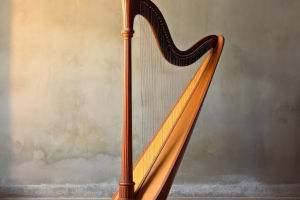A drum is a percussion instrument that usually consists of a sturdy, drum-shaped body with a stretched membrane on one or both sides. It can be struck either by hand or with a drumstick.
Drums are essential in traditional African music and modern music, with some bands consisting entirely of drum-based percussion instruments. In addition to being a musical instrument, drums were also used in many ancient civilizations to disseminate information.
Conga drums, which originated as African hand drums, have evolved significantly over the course of musical instrument history. The production process and materials have become more refined, resulting in a sound that is dominant in South American, African, and Latin music.
Conga drums are an essential percussion instrument for Latin dance drums, popular music, world music, and jazz music. They are generally divided into treble and bass, with two drums as a combination. The current market conventional shape is 29 inches in drum body height, with a diameter size of 4: 10 inches, 11 inches, 11.75 inches, and 12.5 inches.
Aside from conga drums, there are several other popular drums in Africa, including:
1. Talking drums
Talking drums, also known as conversation drums, are one of the oldest instruments in Africa. These hourglass-shaped drums have double-sided skins, with the drum rope evenly and finely attached to both ends. The pitch of the drum can be adjusted by modifying the tightness of the string.
The player usually places the drum clip under their armpit and controls the tightness of the string by the force of the arm, which in turn affects the tightness of the drum surface and adjusts the pitch of the drum. Because of the wide range of pitch adjustments, the drum is also known as a conversation drum because it can convey a variety of messages, much like human language.
2. Djembe
The African djembe is a percussion instrument of the skin and membrane type, shaped like a stone mill used by Africans to grind corn or grain. It is made from a whole tree trunk that is hollowed out and covered with sheepskin. The body of the drum is typically about 50 to 60 cm, and the diameter is about 30 to 38 cm, although some African drums from Côte d'Ivoire are larger in diameter.
African drums are played by hand, and the sound can be high, medium, or low, depending on which part of the drum is played. The drum can be used as a solo instrument or as part of an ensemble with other traditional African instruments.
3. Bass drums
The African bass drum is also an essential instrument in African drumming. Its low and mellow tone provides a stable rhythm for the ensemble, and it is said to be the "pulse" of the drumming ensemble. Covered with cowhide on both sides and struck with a stick, the African bass drum traditionally comes in three sizes: Kenkeni, Sangba, and Djunmba, as well as other sizes.
4. Wooden drums
The wooden drum, also known as the "African wood fish," is a Guinean instrument made from a single piece of wood with a rectangular hole dug through the wood at each end. Because the walls of the two holes are not the same thickness, they produce different sounds when struck on either side. In addition to playing music, wooden drums are primarily used to send messages and warnings. Large wooden drums are typically beaten with two sticks, while smaller ones use just one.


